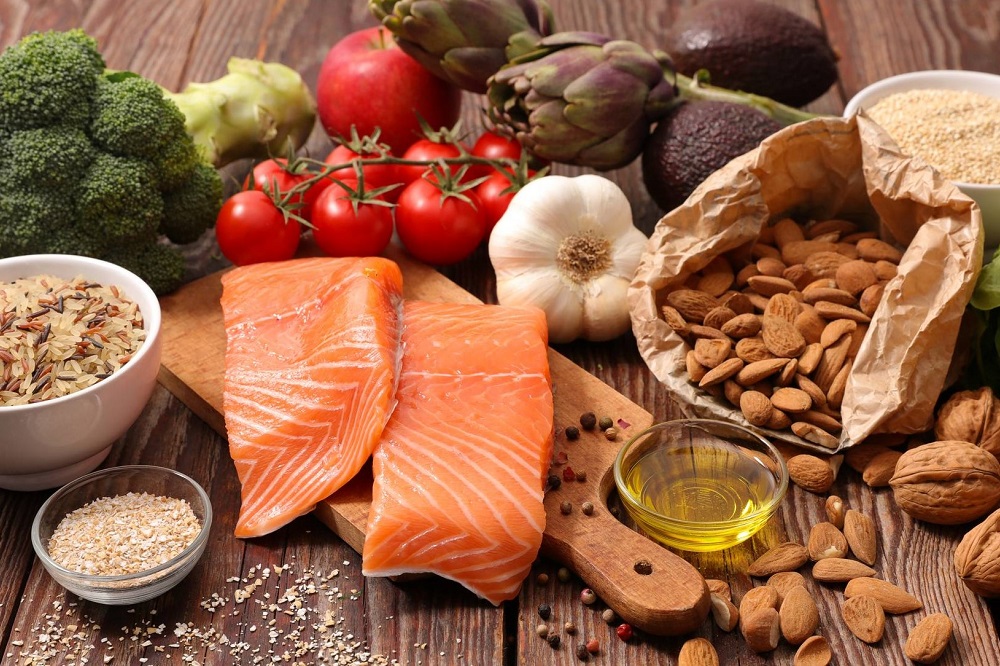Welcome to this premium article dedicated to practical implementation, an ideal ratio between proteins, carbohydrates, fibers and lipidsand, within lipids, between saturated, omega-3, 6 and 9 fatty acids, while respecting the Mediterranean dietlow-carb diets and official recommendations.
In fact, these three eating habits are the ones we defend in this guidededicated to setting up an ideal diet, as these are the ones that seem to give the best results in terms of health markers, weight loss, vitality and longevity.
This content is part of the guide Blooness, the guide to the ideal human diet, the summary of which you can find here 🌱🥑
In this chapter, we will learn how to set up your ideal food bowl, while respecting several constraints:
- The first is quite simply the amount you can possibly consume, which we will estimate in terms of kcal, even if this is a rough estimate and obviously depends on your lifestyle, starting weight, etc....
- The second constraint is simply to respect the official nutritional recommendations in terms of macronutrient distribution (proteins, carbohydrates and lipids), without necessarily doing so to the letter, but at least trying to come close.
- The third constraint will be to bring the official nutritional recommendations closer to those we advocate in this guide, to see her re-evaluate her carbohydrate intake slightly downwards, especially if they come from cereals or white rice, in favor of good fats, and raw foods rich in proteins and essential fats.
- And finally, we are going to try to respect the famous ideal ratio of distribution between the different types of fat, a ratio we saw in the chapter dedicated to the ideal ratio between omega-3, 6, 9 and saturated fatsand optimize your health.
This chapter will therefore answer the following central question: how much protein, carbohydrate and fat how much saturated, monounsaturated (omega-9) and polyunsaturated (omega-3 and omega-6) fat we should be aiming for every day, and all that from which types of foodto provide the body with the best of what it needs, in ideal proportions, for both for a healthy weight goal than for improve longevity and overall health.
Take control of your diet and never miss another chapter of the guide by subscribing to the Blooness newsletter 🙌
The content is therefore absolutely essential for the Blooness guidebecause it lies at the crossroads between a diet controlled in carbohydrates and balanced in good fats, the paleo diet based on an intake of good proteins, Mediterranean diet based on an intake of good fats but above all good sources of carbohydrates, and more generally a healthy diet devoid of processed products, trans fats, high-GI carbohydrates and products grown or raised in poor conditions.
This is a premium content reserved for Blooness members (in this case, the first paid content in the guide), all the more so as it requires you to have integrated the notions previously developed in the guide through the different types of food mentioned above, and from which we're trying to get the best.
This article is an extension of the first article, which theoretically described the ideal ratio to be achieved between omega-3, 6 and 9.. In practice, however, it's no easy matter to aim for this ratio, as it would require us to document every food we eat and its lipid breakdown.
In this article, we will try to define some general rules in order to achieve, more or less, the following results aim for this ideal ratio, while maintaining a realistic calorie intake and respecting the recommended daily allowances for proteins, carbohydrates and fats.
To achieve this, we'll start by recalling the recommended daily values for proteins, carbohydrates and fats, as well as the overall calorie intake to be respected to a greater or lesser extent depending on the individual. Next, we'll learn how to convert grams of food into kcal, then see how best to distribute saturated, monounsaturated and polyunsaturated fatty acids, before using examples of meals and foods to put all this into practice and thus establish an optimal diet.

Obviously, there is an infinite number of different foods, individuals and situations. It would therefore be illusory to draw up "optimal" meal assemblies. However, based on simple examples.., we understand the general logic and can try to approach the ideal ratio and macronutrient recommendations by choosing the right foods and quantities. And for the more gifted in the kitchen, once you've understood the logic, it will be much easier to adapt or create recipes that respect the important balance between different types of fats, proteins and carbohydrates.
It's also important to bear in mind that between general recommendations and everyday life, there can sometimes be a gap between what you eat and what you feel like eating. So it's important not to automate your diet, and it's always a good idea to give yourself the freedom to go off the beaten track, to have meals for pleasure, or, on the contrary, to fast a little and let your digestive system rest. Just because, in theory, there's an ideal distribution of macronutrients or lipids, doesn't mean that from time to time you don't want to do something completely different without worrying about anything.
For information, the quantities suggested in this content are obviously estimates based both on official recommendations and on new trends in nutrition, particularly those which give the lion's share to good fats, for an adult of around 60 to 75kg, in good health, and consuming around 1,800 to 2,400 kcal per day, which corresponds more or less to the average man or woman. It's not a question of following the figures given in this article to the letter, but of understanding them and adapting them to yourself, taking advice from a health professional if necessary.
Training summary :
- How many calories per day?
- How many proteins, carbohydrates and fats per day?
- How do you convert grams into calories?
- How do you estimate your macronutrients?
- A reminder of the omega-3/omega-6 ratio
- Omega-6 is not inherently bad
- How much omega-3 and omega-6 a day on average?
- The different types of omega-3
- Recommended daily omega-3 intake
- How much omega-9 a day?
- How many saturated fatty acids per day?
- Summary table of fat intake
- Example of a healthy daily diet
- Example of a standard daily diet
- Conclusion
Ready to go? Let's get started!

